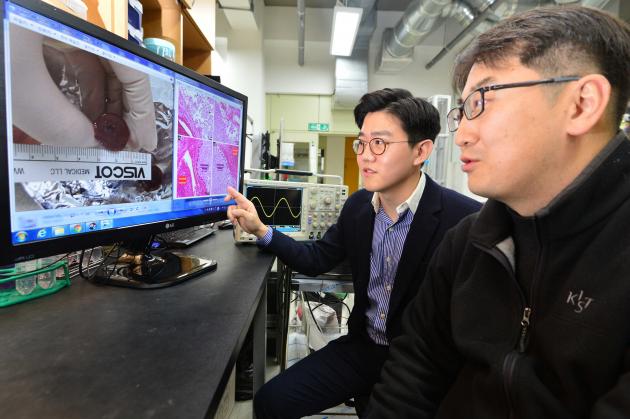Local researchers have found how a boiling histotripsy worked to get rid of tumor tissues, which they said is the world’s first.
Researchers Pahk Ki-joo and Kim Hyung-min at Center for Bionics of Korea Institute of Science and Technology (KIST) said they discovered a joint study with University College London’s research team led by Professor Nader Saffari.

Boiling histotripsy is a technology of focusing ultra-strong ultrasound energy to a particular area for treatment. It is a non-invasive, next-generation medical technology to remove tumors.
The technology uses pressures up to several hundred times the atmospheric pressure in a millisecond to raise the temperature of the target area to a boiling point. Although many researchers have assumed that the kinetic energy of the water vapor bubbles at the targeted area would destroy surrounding tissues, no study demonstrated the exact mechanism.
The KIST research team developed a numerical model to predict the acoustic cavitation in high-intensity ultrasonic fields. Then, they used a high-speed camera to observe the dynamics and the energy intensity of bubbles produced in tissue-mimicking gel phantoms exposed to the high-intensity ultrasound field. The team found that the energy intensity generated by water bubbles were strong enough to kill tissues but weaker enough to keep blood vessels intact.
The study was meaningful in that it not only clarified the detailed mechanism of a tissue removing by boiling histotripsy but raised the possibility of selectively removing desired cell tissues by adjusting the dynamics and the intensity of vapor bubbles, the researchers said.
“We need various follow-up research for clinical application,” Pahk said. “If we find the optimal ultrasound irradiation conditions using the mathematical modeling technique, it will be possible to remove tumors and particular cells selectively without a surgery.”

